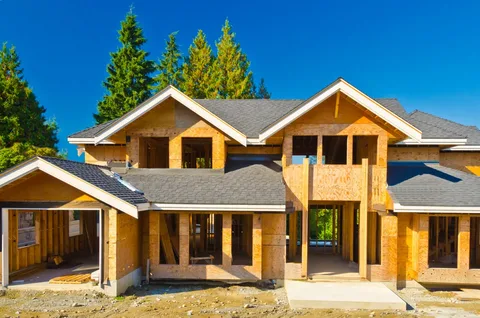The construction industry is evolving rapidly, embracing new technologies and design trends to meet the demands of sustainability, efficiency, and innovation. As cities grow and lifestyles change, architects, engineers, and builders are adopting cutting-edge solutions to create smarter, greener, and more resilient structures. In this article, we’ll explore the latest trends shaping the future of new construction design and technology.
1. Sustainable and Green Building Practices
Sustainability has become a cornerstone of modern construction. With increasing awareness of climate change and environmental impact, builders are prioritizing eco-friendly designs and materials.
- Green Building Certifications: Many projects aim for certifications like LEED (Leadership in Energy and Environmental Design) or BREEAM.
- Energy-Efficient Materials: Innovations like insulated concrete forms (ICFs) and reflective roofing materials help reduce energy consumption.
- Net-Zero Energy Buildings: Structures designed to produce as much energy as they consume are becoming more common, using solar panels, wind turbines, and energy-efficient systems.
These practices not only reduce carbon footprints but also lower long-term operational costs for property owners.
2. Smart Homes and IoT Integration
Smart home technology is revolutionizing residential and commercial construction. The Internet of Things (IoT) enables devices and systems to communicate, creating seamless, automated environments.
- Energy Management Systems: Smart thermostats, lighting, and appliances reduce energy waste.
- Home Automation: Voice-controlled devices like Amazon Alexa and Google Home enhance convenience.
- Security Features: Smart locks, cameras, and alarms ensure safety and remote monitoring.
These technologies provide homeowners with increased comfort, efficiency, and control over their living spaces.
3. Modular and Prefabricated Construction
Modular construction is gaining popularity due to its speed, cost-effectiveness, and reduced environmental impact.
- Off-Site Fabrication: Building components are manufactured in a controlled environment and assembled on-site, reducing construction time and waste.
- Scalability: Modular designs allow for easy expansion or reconfiguration of buildings.
- High-Quality Standards: Controlled production environments ensure consistency and precision.
This trend is particularly popular in residential housing, healthcare facilities, and commercial buildings.
4. Advanced Building Materials
Innovations in materials science are introducing stronger, lighter, and more sustainable options for construction.
- Self-Healing Concrete: Embedded microcapsules release agents that repair cracks automatically.
- Cross-Laminated Timber (CLT): A renewable alternative to steel and concrete, CLT offers strength and sustainability.
- Graphene-Infused Materials: Adding graphene to concrete and other materials enhances durability and conductivity.
These advanced materials improve the performance, longevity, and environmental impact of buildings.
5. 3D Printing in Construction
3D printing is transforming how structures are designed and built, offering unparalleled customization and efficiency.
- On-Site Printing: Large-scale 3D printers can create entire buildings or components quickly and affordably.
- Design Flexibility: Complex shapes and unique designs are easier to achieve.
- Reduced Waste: Printing only the required material minimizes excess.
This technology is being used for housing, bridges, and even disaster relief shelters.
6. Biophilic Design
Biophilic design emphasizes the connection between humans and nature, improving well-being and productivity.
- Natural Light: Large windows and skylights maximize daylight.
- Green Spaces: Incorporating plants, green walls, and rooftop gardens enhances aesthetics and air quality.
- Organic Materials: Wood, stone, and natural fibers create a warm, inviting atmosphere.
This trend is particularly prominent in office buildings, schools, and healthcare facilities.
7. Building Information Modeling (BIM)
Building Information Modeling (BIM) is a digital representation of a building’s lifecycle, from design to demolition.
- Improved Collaboration: Architects, engineers, and contractors can work together more effectively.
- Cost Savings: BIM identifies potential issues before construction begins, reducing costly changes.
- Sustainability Planning: Energy simulations and material analyses help optimize resource use.
BIM has become a standard tool in modern construction, enhancing precision and efficiency.
8. Resilient Design for Climate Change
As extreme weather events become more common, resilient design is crucial for long-lasting structures.
- Flood-Resistant Buildings: Elevated foundations and water-resistant materials protect against flooding.
- Stormproof Designs: Reinforced windows, roofs, and walls withstand high winds.
- Passive Cooling Systems: Innovative designs reduce the need for air conditioning in hot climates.
These measures ensure buildings are prepared for the challenges posed by a changing climate.
9. Renewable Energy Integration
Renewable energy systems are becoming a standard feature in new construction.
- Solar Panels: Rooftop or integrated panels generate clean energy.
- Wind Turbines: Compact turbines are suitable for urban or rural settings.
- Geothermal Heating and Cooling: Underground systems provide energy-efficient climate control.
These technologies reduce reliance on fossil fuels and lower energy costs.
10. Robotics and Automation
Robotics and automation are streamlining construction processes, improving safety and productivity.
- Brick-Laying Robots: Automated systems can lay bricks faster and with greater accuracy than humans.
- Drone Surveys: Drones capture detailed site data, aiding in planning and monitoring.
- Autonomous Equipment: Driverless machinery performs tasks like excavation and grading efficiently.
These technologies reduce labor costs and accelerate project timelines.
Conclusion:
The latest trends in construction design and technology are reshaping how we build, live, and work. From sustainable practices and smart technology to advanced materials and resilient designs, these innovations address modern challenges while paving the way for a greener, smarter, and more efficient future. By embracing these trends, architects, engineers, and builders are creating structures that meet today’s needs while anticipating tomorrow’s demands.
FAQs:
Q1: What is the most significant trend in modern construction?
Sustainability is the most significant trend, with a focus on eco-friendly materials, energy efficiency, and green certifications.
Q2: How does smart home technology improve construction?
Smart technology enhances energy management, security, and convenience, making homes more efficient and user-friendly.
Q3: What are the benefits of modular construction?
Modular construction reduces costs, speeds up timelines, and minimizes environmental impact while maintaining high quality.
Q4: Can 3D printing be used for large-scale projects?
Yes, 3D printing is increasingly being used for large-scale projects like houses, bridges, and infrastructure components.
Q5: What role does BIM play in construction?
BIM improves collaboration, reduces errors, and enables better resource planning throughout a building’s lifecycle.

